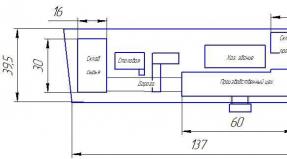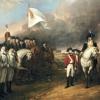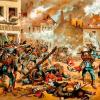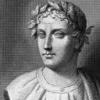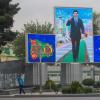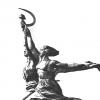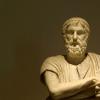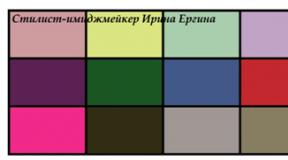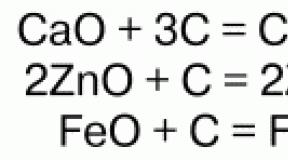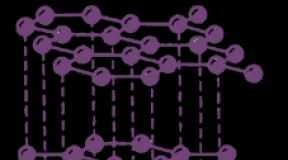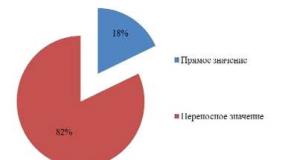The patriarchate in the Russian Orthodox Church was abolished. Patriarchy in Russia. The abolition of the patriarchate under Peter I
Priest Vasily Sekachev, Candidate of Historical Sciences, an employee of the Institute of Europe of the Russian Academy of Sciences, tells about the background and circumstances of the restoration of the patriarchate in Russia, as well as about the election of all patriarchs from 1917 to 1990:
colossal office
In 1721, Peter I finally abolished the patriarchate in Russia, placing the Holy Synod at the head of the Church, headed by the chief procurator - an official wholly accountable to the tsar.
However, during the XVIII-XIX centuries. in Russian society, protests were periodically heard against the church system created by Peter. In the middle of the XIX century. criticism of the synodal system came from among the Slavophiles A. S. Khomyakov, Yu. F. Samarin and I. S. Aksakov. The latter exclaimed with special feeling: “... The soul has disappeared, the ideal has been replaced, that is, in place of the ideal of the Church, the ideal of the state has found itself, and the internal truth has been replaced by formal, external truth”, “From the side of its administration, the Church now seems to us to be some kind of colossal office, applying with the inevitable, alas, clerical lies, the orders of German clericalism to the salvation of the flock of Christ.
To a large extent, it was the bureaucratization of church administration, connected with the abolition of the Patriarchate, and the transformation of the Church into a “spiritual department” that pushed away in the 19th century. from the Church, the majority of the intelligentsia, and then at the turn of the XIX - XX centuries. and a lot of common people.
At the same time, in the 1880s within the walls of the St. Petersburg Theological Academy under the wing of the then Archimandrite Anthony (Vadkovsky), the future Metropolitan of St. Petersburg, in line with the revival of ascetic monastic ideals, they begin to talk about the restoration of the patriarchate - first of all, the future Bishop Mikhail (Gribanovsky) and the future Metropolitan Anthony (Khrapovitsky) . In 1903, an article by the famous publicist, repentant Narodnaya Volya Lev Tikhomirov, “Requests of Life and Our Church Administration,” was published in a separate edition, which speaks of the need to restore the patriarchate and resume the Councils, also canceled by Peter. The article attracted the sympathetic attention of Sovereign Nicholas II, who wished to convene the All-Russian Local Council, for the preparation of which the Pre-Council Presence began to operate in 1906. In 1912, a Pre-Council Conference was established under the Synod, which also prepared the Council.
Russian wailing wall
However, the Cathedral was opened already in revolutionary times - on August 15 (28), 1917. 564 people took part in its work. The episcopate was represented in its entirety, with three laymen and two clerics present from each diocese. The clergy included representatives of theological educational institutions and monasteries, as well as military clergy. There were also lay army representatives. A total of 314 lay people versus 250 clergy.
The reforms of Peter I provoked protest from the conservative boyars and clergy. The head of the Orthodox Church, Patriarch Adrian, openly spoke out against wearing a foreign dress and shaving his beard. During the execution of the rebel archers on Red Square, the patriarch, begging for their mercy, came to Peter in Preobrazhenskoye with a procession, but the tsar did not accept him. After the death of Adrian (1700), Peter decided not to appoint a new patriarch around whom the opponents of reforms could concentrate. He appointed Metropolitan Stefan Yavorsky of Ryazan as "locum tenens of the patriarchal throne", but did not grant him the rights belonging to the patriarch. The king himself openly said: "My father dealt with one bearded man, and I dealt with thousands."
Peter treated Protestants and Catholics with tolerance and allowed them to perform their services. At first, Peter was tolerant towards schismatics, but the proximity of prominent supporters of the schism to Tsarevich Alexei changed things dramatically. The schismatics were subject to a double capitation salary, were not allowed to public service and had to wear a special dress.
The schismatics saw heresy in barbering, a distortion of the face of man, created in "God's likeness." In beards and long clothes, the schismatics saw the difference between the Russian people and the "busurmans" - foreigners. Now, when the tsar himself and his entourage shaved, wore a foreign dress, smoked "the godless antichrist grass" (i.e. tobacco), legends arose among the schismatics that the tsar was replaced by foreigners in "Glass" (i.e. in Stockholm) . In 1700, the scribe Grigory Talitsky was tortured in the Preobrazhensky order for compiling a letter, which stated, “as if the last time had come, and the Antichrist had come into the world, and that Antichrist was the sovereign.” In the handwritten writings of the scribes, in the facial apocalypses, the Antichrist was depicted as similar to Peter, and the servants of the Antichrist were depicted in the form of Peter's soldiers dressed in green uniforms. The sharpness of the opposition in the split was to a large extent an expression of peasant protest against the growing oppression.
Peter fought the schismatics by sending "admonishers", at the same time prescribing in case of "cruel obstinacy" to bring them to justice. Relations developed differently with the moderate part of the split, which refused to oppose the government. Peter tolerated the famous schismatic skete on the Vyga River, founded by Denisov. The inhabitants of the skete carried work at the Olonets ironworks.
In general, Peter I took the path of turning the church service into a state one.
Even during his first trip abroad in the 90s of the 17th century, the young tsar was keenly interested in church life in European states. For more than two hours, Peter talked with the English king and his daughter on the topics of arranging the Anglican Church. It was then that the English monarch gave advice to the young Russian tsar "to become the head of the Russian Church himself, in order to have the fullness of state power, following the example of England." The Protestant spirit of the church structure finally captured Peter when he visited Saxony, the homeland of Martin Luther. Standing in front of the statue of the first reformer, Peter declared: "This man, for the greatest benefit of his sovereign, stepped on the power-hungry pope so courageously that he truly deserved the greatest respect from his people."
According to the Protestant church structure, all churches located on the territory of a state depend on the head of this state for their supreme management. Such a dispensation completely coincided with the ideas of Peter's church transformation. He wanted the sovereign, without anyone's complaints, to be able not only to interfere in the affairs of the Church, but also to manage it.
However, it took about twenty years before Peter put his ideas into practice. For their implementation, he needed a like-minded person in the church environment. And such a person was found. It was the Kiev Archimandrite Feofan (Prokopovich). The process of the birth of church reform proceeded in complete secrecy from the Church and its hierarchy.
The enrichment of the concept of "public service" is facilitated by the analysis of its varieties, in particular, such an original one as the public service of the clergy and its subspecies - the state spiritual service. Although the Table of Ranks of 1722 provided only military, civilian, court ranks, without mentioning the spiritual ones, the service of the Orthodox clergy can be recognized as a special type of public service. During the period of development and adoption of the Table, the state spiritual service was not yet completely objectified: the global church-administrative reform was carried out in parallel. Subsequently, the real situation could not be reflected in the Table for ideological reasons: the secular authorities did not dare to advertise the incorporation of the institutions of the Orthodox Church into the state mechanism. As a result, the legal regulation of the state spiritual service was determined by a set of precedents and was only indirectly and / or partially reflected in the regulatory legal acts Anderson M.S. Peter the Great. - Rostov-on-Don: Phoenix, 2007. - P.94.
The civil service in the Russian Empire was determined by the activity “in the order of subordinate state administration” and was characterized by subjective (a specific person as a representative of a government body) and objective (activity of the person himself in the state administration apparatus) moments. The main thing in the civil service was "authorization" for subordinate activities in the field of administration. Accordingly, the main features of public service are: a set of certain actions; actions are performed in the interests of public administration; a certain way of performing actions; being within official powers History of Russia. From ancient times to the end of the century. - M.: AST, 2001. - P. 122. In our opinion, the service of the Orthodox clergy has these features. Thus, confessors at correctional institutions were endowed with a certain competence, including the performance of the sacraments of faith. These actions of the clergy were carried out in the interests of state administration, if only because, as is known, under Emperor Peter I, in the case of reporting at confession information about an impending crime against state power or the reigning dynasty, the clergyman was obliged to report this to law enforcement agencies. In addition, clerics at correctional institutions were not limited solely to the purpose of performing the sacraments, but also carried out educational and educational functions in the prison environment on the basis of both secular state acts - university charters, etc., and state-corporate acts of the Church. This corresponds to the characterization of management as a subordinate administrative activity.
The pre-revolutionary theory of law saw no difference between the church and any other union subordinate to the supreme power and contributing to the goals of public welfare. Secular power, being the highest and exclusive instance of the common good, recognized itself as entitled to manage the church in the same way as any other institution or union pursuing public goals. By the beginning of the XX century. the religious-church evolution ended, the beginning of which was laid by the transformations of Peter the Great. As a result of a set of reforms, the independence of the Russian Orthodox Church and the clergy turned out to be more illusory than real. The clergy became a special kind of "service class" through attachment to the public service. The Church in the Russian Empire lost its independence, becoming, in fact, the state Department of the Orthodox confession. The most striking example of merging the duties of the state with the competence of a church corporation is the conduct of civil status acts in the form of registers of births.
At a certain stage of development, the Russian Orthodox Church also became a kind of "mass media" of the state power: by the Decree of 1718, it was ordered to go to church on Sundays and holidays, since new Decrees were read there after Mass, about which those who could not read could learn only during such hearings. In addition, it is impossible not to notice the interference of the Governing Senate in the organization of church parishes, the composition of clergy and the procedure for entering the clergy. The awards to the spiritual academies of the title of "imperial" were made with the only meaning inherent in this - the training of personnel of "spiritual officials". The church was involved in the propaganda of ideas and measures useful for the autocracy, including credit, insurance, and forms of farming. The black clergy was entrusted with the work of education and charity, and in addition - the duty of maintaining the monastic states History of Russia: In 2 vols. Vol. 1: From ancient times to the end of the 18th century. / Under the editorship of A. N. Sakharov. - M .: AST Publishing House LLC: Ermak NPP CJSC: Astrel Publishing House LLC, 2008. - P. 311.
Thus, all the clergy were involved in the public service and constituted a special semi-privileged service class of the state spiritual service. In the opinion of authoritative pre-revolutionary scholars of church law, the reform of church life finally went not along the path of establishing self-government, but along the bureaucratic path.
Peter rejected all the persistent requests of the higher clergy for the election of a patriarch. For the first time, Peter mentioned the coming reform only in 1718, responding to another complaint from the patriarchal locum tenens and reproaching him for helplessness. The king declared that "from now on, for the best, it seems to be a spiritual college, so that it would be more convenient and possible to correct such great things as church administration." At the same time, he instructed Feofan, who had already become the Bishop of Pskov, to write a draft of this college and a word in its defense.
Job(in the world John) - Patriarch of Moscow and All Russia. On the initiative of St. Job, transformations were carried out in the Russian Church, as a result of which 4 metropolias were included in the Moscow Patriarchate: Novgorod, Kazan, Rostov and Krutitsy; new dioceses were established, more than a dozen monasteries were founded.
Patriarch Job was the first to put book printing on a broad basis. With the blessing of St. Job, the Lenten Triodion, the Colored Triodion, the Octoechos, the Common Menaion, the Official of the Hierarchal Service, and the Missal were published for the first time.
During the Time of Troubles, St. Job was actually the first to lead the opposition of the Russians to the Polish-Lithuanian invaders. On April 13, 1605, Patriarch Job, who refused to swear allegiance to False Dmitry I, was deposed and, having endured many reproaches, was exiled to the Staritsky Monastery. After the overthrow of False Dmitry I, St. Job could not to return to the First Hierarchal Throne, he blessed the Metropolitan of Kazan Hermogenes in his place. Patriarch Job died peacefully on June 19, 1607. In 1652, under Patriarch Joseph, the incorruptible and fragrant relics of Saint Job were transferred to Moscow and laid next to the tomb of Patriarch Joasaph (1634-1640). Many healings took place from the relics of St. Job.
His memory is celebrated by the Russian Orthodox Church on April 5/18 and June 19/July 2.
 Hermogenes(in the world Yermolai) (1530-1612) - Patriarch of Moscow and All Russia. The patriarchate of Saint Hermogenes coincided with the difficult times of the Time of Troubles. With special inspiration, His Holiness the Patriarch opposed the traitors and enemies of the Fatherland, who wanted to enslave the Russian people, introduce Uniateism and Catholicism in Russia, and eradicate Orthodoxy.
Hermogenes(in the world Yermolai) (1530-1612) - Patriarch of Moscow and All Russia. The patriarchate of Saint Hermogenes coincided with the difficult times of the Time of Troubles. With special inspiration, His Holiness the Patriarch opposed the traitors and enemies of the Fatherland, who wanted to enslave the Russian people, introduce Uniateism and Catholicism in Russia, and eradicate Orthodoxy.
Muscovites, under the leadership of Kozma Minin and Prince Dmitry Pozharsky, raised an uprising, in response to which the Poles set fire to the city, while they themselves took refuge in the Kremlin. Together with the Russian traitors, they forcibly removed the holy Patriarch Hermogenes from the Patriarchal Throne and imprisoned him in the Miracle Monastery.” Patriarch Hermogenes blessed the Russian people for the feat of liberation.
For more than nine months St. Hermogenes languished in severe imprisonment. On February 17, 1612, he died a martyr of hunger and thirst. The liberation of Russia, for which St. Hermogenes stood with such unshakable courage, was successfully completed by the Russian people through his intercession.
The body of Hieromartyr Hermogenes was buried with due honor in the Miracle Monastery. The holiness of the Patriarchal feat, as well as his personality as a whole, was illuminated from above later - during the opening in 1652 of the shrine with the relics of the saint. 40 years after his death, Patriarch Hermogenes lay as if alive.
With the blessing of St. Hermogenes, the service to the holy Apostle Andrew the First-Called was translated from Greek into Russian and the celebration of his memory was restored in the Dormition Cathedral. Under the supervision of the Primate, new machines for printing liturgical books were made and a new printing house building was built, which was damaged during the fire of 1611, when Moscow was set on fire by the Poles.
In 1913, the Russian Orthodox Church glorified Patriarch Hermogenes as a saint. His memory is celebrated on May 12/25 and February 17/March 1.
 Filaret(Romanov Fedor Nikitich) (1554-1633) - Patriarch of Moscow and All Russia, father of the first tsar from the Romanov dynasty. Under Tsar Theodore Ioannovich, he was a noble boyar, under Boris Godunov he fell into disgrace, was exiled to a monastery and tonsured a monk. In 1611, while with the embassy in Poland, he was taken prisoner. In 1619 he returned to Russia and until his death was the de facto ruler of the country with his sickly son, Tsar Mikhail Feodorovich.
Filaret(Romanov Fedor Nikitich) (1554-1633) - Patriarch of Moscow and All Russia, father of the first tsar from the Romanov dynasty. Under Tsar Theodore Ioannovich, he was a noble boyar, under Boris Godunov he fell into disgrace, was exiled to a monastery and tonsured a monk. In 1611, while with the embassy in Poland, he was taken prisoner. In 1619 he returned to Russia and until his death was the de facto ruler of the country with his sickly son, Tsar Mikhail Feodorovich.
 Joasaph I- Patriarch of Moscow and All Russia. Tsar Mikhail Fedorovich, notifying the four Ecumenical Patriarchs of the death of his father, also wrote that “the Great Russian Church Patriarch Joasaph of Pskov, a prudent, truthful, reverent man and taught every virtue.” Patriarch Joasaph I was elevated to the chair of the Moscow Patriarch by the blessing of Patriarch Filaret, who himself chose a successor.
Joasaph I- Patriarch of Moscow and All Russia. Tsar Mikhail Fedorovich, notifying the four Ecumenical Patriarchs of the death of his father, also wrote that “the Great Russian Church Patriarch Joasaph of Pskov, a prudent, truthful, reverent man and taught every virtue.” Patriarch Joasaph I was elevated to the chair of the Moscow Patriarch by the blessing of Patriarch Filaret, who himself chose a successor.
He continued the publishing work of his predecessors, doing a great job of collating and correcting liturgical books. During the relatively short reign of Patriarch Ioasaph, 3 monasteries were founded and 5 former ones were restored.
 Joseph- Patriarch of Moscow and All Russia. Strict observance of church statutes and legalizations became a characteristic feature of the ministry of Patriarch Joseph. In 1646, before the onset of Great Lent, Patriarch Joseph sent out a district order to all spiritual ranks and all Orthodox Christians to observe the upcoming fast in purity. This district message of Patriarch Joseph, as well as the decree of the king in 1647 on the prohibition of work on Sundays and holidays and on the restriction of trade on these days, contributed to the strengthening of faith among the people.
Joseph- Patriarch of Moscow and All Russia. Strict observance of church statutes and legalizations became a characteristic feature of the ministry of Patriarch Joseph. In 1646, before the onset of Great Lent, Patriarch Joseph sent out a district order to all spiritual ranks and all Orthodox Christians to observe the upcoming fast in purity. This district message of Patriarch Joseph, as well as the decree of the king in 1647 on the prohibition of work on Sundays and holidays and on the restriction of trade on these days, contributed to the strengthening of faith among the people.
Patriarch Joseph paid great attention to the matter of spiritual enlightenment. With his blessing, in 1648, a religious school was founded in Moscow at the Andreevsky Monastery. Under Patriarch Joseph, as well as under his predecessors, liturgical and church teaching books were published throughout Russia. In total, during the 10 years under Patriarch Joseph, 36 titles of books were published, of which 14 had not been published in Russia before.
The name of Patriarch Joseph will forever remain on the tablets of history due to the fact that it was this archpastor who managed to take the first steps towards the reunification of Ukraine (Little Russia) with Russia, although the reunification itself took place in 1654 after the death of Joseph under Patriarch Nikon.
 Nikon(in the world Nikita Minich Minin) (1605-1681) - Patriarch of Moscow and All Russia since 1652. Nikon's patriarchate constituted a whole era in the history of the Russian Church. Like Patriarch Philaret, he had the title of "Great Sovereign", which he received in the first years of his Patriarchate in view of the Tsar's special disposition towards him. He took part in solving almost all national affairs. In particular, with the active assistance of Patriarch Nikon in 1654, the historical reunification of Ukraine with Russia took place. The lands of Kievan Rus, once torn away by the Polish-Lithuanian magnates, became part of the Muscovite state. This soon led to the return of the primordially Orthodox dioceses of Southwestern Russia to the bosom of the Mother Russian Church. Belarus soon reunited with Russia. The title of Patriarch of All Great and Small and White Russia was added to the title of the Patriarch of Moscow "Great Sovereign".
Nikon(in the world Nikita Minich Minin) (1605-1681) - Patriarch of Moscow and All Russia since 1652. Nikon's patriarchate constituted a whole era in the history of the Russian Church. Like Patriarch Philaret, he had the title of "Great Sovereign", which he received in the first years of his Patriarchate in view of the Tsar's special disposition towards him. He took part in solving almost all national affairs. In particular, with the active assistance of Patriarch Nikon in 1654, the historical reunification of Ukraine with Russia took place. The lands of Kievan Rus, once torn away by the Polish-Lithuanian magnates, became part of the Muscovite state. This soon led to the return of the primordially Orthodox dioceses of Southwestern Russia to the bosom of the Mother Russian Church. Belarus soon reunited with Russia. The title of Patriarch of All Great and Small and White Russia was added to the title of the Patriarch of Moscow "Great Sovereign".
But Patriarch Nikon showed himself especially zealously as a church reformer. In addition to streamlining the liturgy, he replaced the two-fingered with the three-fingered sign of the cross, corrected the liturgical books according to Greek models, in which lies his immortal, great merit before the Russian Church. However, the church reforms of Patriarch Nikon gave rise to the Old Believer schism, the consequences of which overshadowed the life of the Russian Church for several centuries.
The Primate encouraged church building in every possible way; he himself was one of the best architects of his time. Under Patriarch Nikon, the richest monasteries of Orthodox Russia were built: Voskresensky near Moscow, called "New Jerusalem", Iversky Svyatoozersky in Valdai and Krestny Kiyostrovsky in Onega Bay. But Patriarch Nikon considered the height of the personal life of the clergy and monasticism to be the main foundation of the earthly Church. Throughout his life, Patriarch Nikon did not stop reaching out for knowledge and learning something. He collected the richest library. Patriarch Nikon was engaged in Greek, studied medicine, painted icons, mastered the art of making tiles ... Patriarch Nikon sought to build Holy Russia - the new Israel. Keeping alive, creative Orthodoxy, he wished to create an enlightened Orthodox culture and learned it from the Orthodox East. But some of the measures taken by Patriarch Nikon infringed upon the interests of the boyars and they slandered the Patriarch before the tsar. By the decision of the Council, he was deprived of the Patriarchate and sent to prison: first to Ferapontov, and then, in 1676, to the Kirillo-Belozersky Monastery. At the same time, however, the church reforms carried out by him were not only not canceled, but received approval.
The deposed Patriarch Nikon spent 15 years in exile. Before his death, Tsar Alexei Mikhailovich asked Patriarch Nikon for forgiveness in his will. The new Tsar Theodore Alekseevich decided to return Patriarch Nikon to his rank and asked him to return to the Resurrection Monastery he had founded. On the way to this monastery, Patriarch Nikon peacefully reposed in the Lord, surrounded by manifestations of the great love of the people and his disciples. Patriarch Nikon was buried with due honors in the Resurrection Cathedral of the New Jerusalem Monastery. In September 1682, letters of all four Eastern Patriarchs were delivered to Moscow, resolving Nikon from all prohibitions and restoring him to the rank of Patriarch of All Russia.
 Joasaph II- Patriarch of Moscow and All Russia. The Great Moscow Council of 1666-1667, which condemned and deposed Patriarch Nikon and anathematized the Old Believers as heretics, elected a new Primate of the Russian Church. Archimandrite Joasaph of the Trinity-Sergius Lavra became Patriarch of Moscow and All Russia.
Joasaph II- Patriarch of Moscow and All Russia. The Great Moscow Council of 1666-1667, which condemned and deposed Patriarch Nikon and anathematized the Old Believers as heretics, elected a new Primate of the Russian Church. Archimandrite Joasaph of the Trinity-Sergius Lavra became Patriarch of Moscow and All Russia.
Patriarch Joasaph devoted considerable attention to missionary activity, especially in the outskirts of the Russian state, which were just beginning to be developed: in the Far North and Eastern Siberia, especially in Transbaikalia and the Amur basin, along the border with China. In particular, with the blessing of Joasaph II, the Spassky Monastery was founded in 1671 near the Chinese border.
The great merit of Patriarch Joasaph in the field of healing and revitalizing the pastoral activity of the Russian clergy should be recognized as decisive actions taken by him aimed at restoring the tradition of delivering a sermon at divine services, which by that time had almost died out in Russia.
During the patriarchate of Joasaph II, extensive publishing activities continued in the Russian Church. During the short period of primatial service of Patriarch Joasaph, not only numerous liturgical books were printed, but also many editions of doctrinal content. Already in 1667, the “Legend of the Cathedral Acts” and the “Rod of Government”, written by Simeon of Polotsk to denounce the Old Believer schism, were published, then the “Large Catechism” and “Small Catechism” were published.
 Pitirim- Patriarch of Moscow and All Russia. Patriarch Pitirim accepted the primatial rank already at a very advanced age and ruled the Russian Church for only about 10 months, until his death in 1673. He was close to Patriarch Nikon and after his deposition became one of the contenders for the Throne, but he was elected only after the death of Patriarch Joasaph II.
Pitirim- Patriarch of Moscow and All Russia. Patriarch Pitirim accepted the primatial rank already at a very advanced age and ruled the Russian Church for only about 10 months, until his death in 1673. He was close to Patriarch Nikon and after his deposition became one of the contenders for the Throne, but he was elected only after the death of Patriarch Joasaph II.
On July 7, 1672, in the Assumption Cathedral of the Moscow Kremlin, Metropolitan Pitirim of Novgorod was elevated to the Patriarchal Throne, being already very ill, Metropolitan Joachim was called to administration.
After a ten-month unremarkable patriarchate, he died on April 19, 1673.
 Joachim(Savelov-First Ivan Petrovich) - Patriarch of Moscow and All Russia. Due to the illness of Patriarch Pitirim, Metropolitan Joachim was involved in the affairs of the Patriarchal administration, and on July 26, 1674, he was elevated to the primatial cathedra.
Joachim(Savelov-First Ivan Petrovich) - Patriarch of Moscow and All Russia. Due to the illness of Patriarch Pitirim, Metropolitan Joachim was involved in the affairs of the Patriarchal administration, and on July 26, 1674, he was elevated to the primatial cathedra.
His efforts were aimed at fighting against foreign influence on Russian society.
The primate was distinguished by zeal for the strict fulfillment of church canons. He revised the orders of the liturgy of the saints and eliminated some inconsistencies in liturgical practice. In addition, Patriarch Joachim corrected and published the Typicon, which is still used in the Russian Orthodox Church almost unchanged.
In 1678, Patriarch Joachim expanded the number of almshouses in Moscow, which were supported by church funds.
With the blessing of Patriarch Joachim, a theological school was founded in Moscow, which marked the beginning of the Slavic-Greek-Latin Academy, which in 1814 was transformed into the Moscow Theological Academy.
In the field of public administration, Patriarch Joachim also proved to be an energetic and consistent politician, actively supporting Peter I after the death of Tsar Theodore Alekseevich.
 Adrian(in the world? Andrei) (1627-1700) - Patriarch of Moscow and All Russia since 1690. On August 24, 1690, Metropolitan Adrian was elevated to the All-Russian Patriarchal Throne. In his speech during his enthronement, Patriarch Adrian called on the Orthodox to keep the canons intact, observe peace, and protect the Church from heresies. In the "District Epistle" and "Exhortation" to the flock, consisting of 24 points, Patriarch Adrian gave spiritually useful instructions to each of the estates. He did not like barbering, smoking, the abolition of Russian national clothes and other similar everyday innovations of Peter I. The useful and really important undertakings of the tsar, aimed at the good dispensation of the Fatherland (building a fleet, military and socio-economic transformations), Patriarch Adrian understood and supported.
Adrian(in the world? Andrei) (1627-1700) - Patriarch of Moscow and All Russia since 1690. On August 24, 1690, Metropolitan Adrian was elevated to the All-Russian Patriarchal Throne. In his speech during his enthronement, Patriarch Adrian called on the Orthodox to keep the canons intact, observe peace, and protect the Church from heresies. In the "District Epistle" and "Exhortation" to the flock, consisting of 24 points, Patriarch Adrian gave spiritually useful instructions to each of the estates. He did not like barbering, smoking, the abolition of Russian national clothes and other similar everyday innovations of Peter I. The useful and really important undertakings of the tsar, aimed at the good dispensation of the Fatherland (building a fleet, military and socio-economic transformations), Patriarch Adrian understood and supported.
 (Yavorsky Simeon Ivanovich) - Metropolitan of Ryazan and Murom, Patriarchal locum tenens of the Moscow throne.
(Yavorsky Simeon Ivanovich) - Metropolitan of Ryazan and Murom, Patriarchal locum tenens of the Moscow throne.
He studied at the famous Kiev-Mohyla collegium - the center of the then South Russian education.
In which he studied until 1684. To enter the Jesuit school, Yavorsky, like his other contemporaries, converted to Catholicism. In the southwest of Russia, this was commonplace.
Stefan studied philosophy in Lvov and Lublin, and then theology in Vilna and Poznań. In Polish schools, he became thoroughly acquainted with Catholic theology and adopted a hostile attitude towards Protestantism.
In 1689, Stefan returned to Kiev, repented for his renunciation of the Orthodox Church, and was accepted back into its bosom.
In the same year he accepted monasticism and underwent monastic obedience in the Kiev-Pechersk Lavra.
In the Kiev Collegium, he went from teacher to professor of theology.
Stefan became a famous preacher and in 1697 he was appointed abbot of the St. Nicholas Desert Monastery, which was then outside Kiev.
After a sermon delivered on the occasion of the death of the tsarist voivode A. S. Shein, which was noted by Peter I, he was consecrated to the bishopric and appointed Metropolitan of Ryazan and Murom.
On December 16, 1701, after the death of Patriarch Adrian, at the direction of the king, Stefan was appointed locum tenens of the patriarchal throne.
Stephen's church-administrative activity was insignificant, the power of the locum tenens, in comparison with the patriarch, was limited by Peter I. In spiritual matters, in most cases, Stephen had to confer with the council of bishops.
Peter I kept him with him until his death, carrying out under his sometimes forced blessing all the reforms that were unpleasant for Stephen. Metropolitan Stephen did not have the strength to openly break with the tsar, and at the same time he could not come to terms with what was happening.
In 1718, during the trial of Tsarevich Alexei, Tsar Peter I instructed Metropolitan Stefan to come to St. Petersburg and did not allow him to leave until his death, depriving him of even the insignificant power that he partially enjoyed.
In 1721 the Synod was opened. The tsar appointed Metropolitan Stefan as the President of the Synod, who was the least sympathetic to this institution. Stefan refused to sign the minutes of the Synod, did not attend its meetings and had no influence on synodal affairs. The tsar apparently kept him only in order to use his name to give a certain sanction to the new institution. Throughout his stay in the Synod, Metropolitan Stefan was under investigation for political affairs as a result of constant slander against him.
Metropolitan Stefan died on November 27, 1722 in Moscow, on the Lubyanka, in the Ryazan courtyard. On the same day, his body was taken to the Trinity Church at the Ryazan Compound, where it stood until December 19, that is, until the arrival in Moscow of Emperor Peter I and members of the Holy Synod. On December 20, in the Church of the Assumption of the Most Pure Theotokos, called Grebnevskaya, the funeral of Metropolitan Stefan took place.
 Tikhon(Belavin Vasily Ivanovich) - Patriarch of Moscow and All Russia. In 1917 the All-Russian Local Council of the Russian Orthodox Church restored the Patriarchate. A most important event in the history of the Russian Church has taken place: after two centuries of forced headlessness, she again found her Primate and High Hierarch.
Tikhon(Belavin Vasily Ivanovich) - Patriarch of Moscow and All Russia. In 1917 the All-Russian Local Council of the Russian Orthodox Church restored the Patriarchate. A most important event in the history of the Russian Church has taken place: after two centuries of forced headlessness, she again found her Primate and High Hierarch.
Metropolitan Tikhon of Moscow and Kolomna (1865-1925) was elected to the Patriarchal Throne.
Patriarch Tikhon was a true defender of Orthodoxy. Despite all his gentleness, benevolence and complacency, he became unshakably firm and adamant in church matters, where necessary, and above all in protecting the Church from her enemies. True Orthodoxy and the firmness of Patriarch Tikhon's character at the time of the "renovationist" schism came to light especially clearly. He stood as an insurmountable obstacle in the way of the Bolsheviks before their plans to corrupt the Church from within.
His Holiness Patriarch Tikhon has taken the most important steps towards the normalization of relations with the state. Patriarch Tikhon's epistles proclaim: "The Russian Orthodox Church ... must be and will be the One Catholic Apostolic Church, and all attempts, from whomever they come, to plunge the Church into a political struggle must be rejected and condemned" (from the Appeal of July 1, 1923 G.)
Patriarch Tikhon aroused the hatred of the representatives of the new government, which constantly persecuted him. He was either imprisoned or kept under "house arrest" in the Moscow Donskoy Monastery. The life of His Holiness was always under threat: there was an attempt on his life three times, but he fearlessly traveled to perform services in various churches in Moscow and beyond. The entire Patriarchate of His Holiness Tikhon was a continuous feat of martyrdom. When the authorities made him an offer to go abroad for permanent residence, Patriarch Tikhon said: “I will not go anywhere, I will suffer here together with all the people and fulfill my duty to the limit set by God.” All these years he actually lived in prison and died in struggle and sorrow. His Holiness Patriarch Tikhon died on March 25, 1925, on the feast of the Annunciation of the Most Holy Theotokos, and was buried in the Moscow Donskoy Monastery.
 Peter(Polyansky, in the world Pyotr Fedorovich Polyansky) - Bishop, Metropolitan Patriarchal Locum Tenens of Krutitsy from 1925 until the false announcement of his death (end of 1936).
Peter(Polyansky, in the world Pyotr Fedorovich Polyansky) - Bishop, Metropolitan Patriarchal Locum Tenens of Krutitsy from 1925 until the false announcement of his death (end of 1936).
According to the will of Patriarch Tikhon, Metropolitans Kirill, Agafangel or Peter were to become locum tenens. Since Metropolitans Kirill and Agafangel were in exile, Metropolitan Peter Krutitsky became the locum tenens. As a locum tenens, he provided great assistance to prisoners and exiles, especially to clergy. Vladyko Peter resolutely spoke out against renovation. He refused to make a call for loyalty to the Soviet regime. Endless prisons and concentration camps began. During interrogation in December 1925, he said that the church could not approve of the revolution: “The social revolution is built on blood and fratricide, which the Church cannot recognize.”
He refused to remove himself from the title of patriarchal locum tenens, despite threats to extend his prison sentence. In 1931, he rejected the offer of Chekist Tuchkov to give a signature on cooperation with the authorities as an informer.
At the end of 1936, the patriarchate received false information about the death of the patriarchal locum tenens Peter, as a result of which, on December 27, 1936, Metropolitan Sergius assumed the title of patriarchal locum tenens. In 1937, a new criminal case was initiated against Metropolitan Peter. On October 2, 1937, the NKVD troika in the Chelyabinsk region was sentenced to death. On October 10 at 4 p.m. he was shot. The place of burial remains unknown. Glorified as New Martyrs and Confessors of Russia by the Council of Bishops in 1997.
 Sergius(in the world Ivan Nikolaevich Stragorodsky) (1867-1944) - Patriarch of Moscow and All Russia. Renowned theologian and spiritual writer. Bishop since 1901. After the death of the holy Patriarch Tikhon - patriarchal locum tenens, that is, the actual primate of the Russian Orthodox Church. In 1927, at a difficult time both for the Church and for the entire people, he addressed the clergy and laity with a message in which he called on the Orthodox to be loyal to the Soviet regime. This message caused ambiguous assessments both in Russia and in the emigrant environment. In 1943, at the turning point of the Great Patriotic War, the government decided to restore the patriarchate, and Sergius was elected Patriarch at the Local Council. He took an active patriotic position, urged all Orthodox to tirelessly pray for victory, organized fundraising to help the army.
Sergius(in the world Ivan Nikolaevich Stragorodsky) (1867-1944) - Patriarch of Moscow and All Russia. Renowned theologian and spiritual writer. Bishop since 1901. After the death of the holy Patriarch Tikhon - patriarchal locum tenens, that is, the actual primate of the Russian Orthodox Church. In 1927, at a difficult time both for the Church and for the entire people, he addressed the clergy and laity with a message in which he called on the Orthodox to be loyal to the Soviet regime. This message caused ambiguous assessments both in Russia and in the emigrant environment. In 1943, at the turning point of the Great Patriotic War, the government decided to restore the patriarchate, and Sergius was elected Patriarch at the Local Council. He took an active patriotic position, urged all Orthodox to tirelessly pray for victory, organized fundraising to help the army.
 Alexy I(Simansky Sergey Vladimirovich) (1877-1970) - Patriarch of Moscow and All Russia. Born in Moscow, graduated from the Faculty of Law of Moscow University and the Moscow Theological Academy. Bishop since 1913, served in Leningrad during the Great Patriotic War, in 1945 he was elected Patriarch at the Local Council.
Alexy I(Simansky Sergey Vladimirovich) (1877-1970) - Patriarch of Moscow and All Russia. Born in Moscow, graduated from the Faculty of Law of Moscow University and the Moscow Theological Academy. Bishop since 1913, served in Leningrad during the Great Patriotic War, in 1945 he was elected Patriarch at the Local Council.
 Pimen(Izvekov Sergey Mikhailovich) (1910-1990) - Patriarch of Moscow and All Russia since 1971. Member of the Great Patriotic War. He was persecuted for confessing the Orthodox faith. Twice (before the war and after the war) was imprisoned. Bishop since 1957. He was buried in the crypt (underground chapel) of the Assumption Cathedral of the Holy Trinity Sergius Lavra.
Pimen(Izvekov Sergey Mikhailovich) (1910-1990) - Patriarch of Moscow and All Russia since 1971. Member of the Great Patriotic War. He was persecuted for confessing the Orthodox faith. Twice (before the war and after the war) was imprisoned. Bishop since 1957. He was buried in the crypt (underground chapel) of the Assumption Cathedral of the Holy Trinity Sergius Lavra.
 Alexy II(Ridiger Alexei Mikhailovich) (1929-2008) - Patriarch of Moscow and All Russia. Graduated from the Leningrad Theological Academy. Bishop since 1961, since 1986 - Metropolitan of Leningrad and Novgorod, in 1990 he was elected Patriarch at the Local Council. Honorary member of many foreign theological academies.
Alexy II(Ridiger Alexei Mikhailovich) (1929-2008) - Patriarch of Moscow and All Russia. Graduated from the Leningrad Theological Academy. Bishop since 1961, since 1986 - Metropolitan of Leningrad and Novgorod, in 1990 he was elected Patriarch at the Local Council. Honorary member of many foreign theological academies.
 Kirill(Gundyaev Vladimir Mikhailovich) (born 1946) - Patriarch of Moscow and All Russia. Graduated from the Leningrad Theological Academy. In 1974 he was appointed rector of the Leningrad Theological Academy and Seminary. Bishop since 1976. In 1991, he was elevated to the rank of metropolitan. In January 2009, at the Local Council, he was elected Patriarch.
Kirill(Gundyaev Vladimir Mikhailovich) (born 1946) - Patriarch of Moscow and All Russia. Graduated from the Leningrad Theological Academy. In 1974 he was appointed rector of the Leningrad Theological Academy and Seminary. Bishop since 1976. In 1991, he was elevated to the rank of metropolitan. In January 2009, at the Local Council, he was elected Patriarch.
The 18th century was an era of radical change in many aspects of the life of the Russian people. With the reign of Peter I, the period of the so-called "Europeanization" of Russia begins. The political life of the country and its economy are built on the model of the Western European states. Western European forms of culture are being vigorously introduced. Although in Russia they began to get acquainted with many of these phenomena of Western European life as early as the 17th century, under Peter I they all began to be planted from above - forcibly and immediately. The unjustified destruction of national cultural traditions and forms of state life undertaken at the same time points to one of the vulnerable aspects of the Petrine reform.
Peter I began his transformations in the structure of church life, proceeding from considerations of "state benefit", during the lifetime of Patriarch Adrian. Thus, in 1697, by a tsarist decree, the economy of the bishop's houses and monasteries (“indestructible patrimonies”) was taken under state control, and construction activities were forbidden to the monasteries. In 1698, the payment of the state ruby (that is, money and bread. - Ed.) churches that had lands and parish yards. For churches that did not have land and parish yards, the rug was reduced by half. The lands of the churches themselves were declared quitrent articles of the treasury. After the death of the Patriarch (October 16, 1700), Peter I takes further steps with the aim of subordinating the church system in Russia even more to the interests of tsarist absolutism.
The election of a new Patriarch never took place. Only an Exarch (Locum Tenens) of the Patriarchal throne was appointed, who, at the request of the tsar, became the educated Ukrainian Metropolitan of Ryazan Stefan (Yavorsky). At the same time, the Exarch and the Consecrated Council were given the competence to conduct only cases “on schism, opposition to the Church and heresies.” As for appointments to church positions and other church administrative issues, they were now almost completely controlled by the tsar himself and his close associates A. D. Menshikov, I. A. Musin-Pushkin and Archimandrite Theodosius (Yanovsky), who came forward later.
In January 1701, the monastic order, abolished back in 1667, was restored, which took over the management of all church estates and the disposal of fees and outfits from them. For the maintenance of bishops and monasteries from the order, salaries were now assigned, and extremely curtailed - "without which it is impossible to live." The rest of the amounts received from fees from church estates were supposed to be used for state and public needs, in particular for the creation of schools and charitable institutions (hospitals, almshouses for the poor, crippled soldiers, etc.). However, if almshouses were set up at monasteries, parishes or episcopal houses, then the estates were again returned to the respective spiritual authorities under their own control, although with state control over the income from them.
Summing up the twenty years of activity of the monastery order, it must be said that it led the church economy to extreme disorder. Bishop's houses became leaner from year to year, monastic buildings fell apart without amendment, the number of households in the estates was sharply reduced due to excessive fees. Arrears in fees from church estates were constantly growing, reaching in 1721-1722. a huge amount for that time - more than 1.2 million rubles.
Meanwhile, the views on relations between the state and the Church, borrowed from the Protestants, were further strengthened by Peter I in connection with his travels in Europe. So, during the first of them, he listened not without attention to William of Orange, who advised him to arrange the Russian Church in the manner of the Anglican, declaring himself its Head. In 1712 in Wittenberg, having seen a monument to M. Luther, Peter praised the latter for the fact that he "courageously attacked the Pope and all his army for the greatest benefit of his sovereign and many princes who were smarter than others."
In the desire of Russian church leaders to preserve the patriarchate, the autocrat saw only the “pape spirit” that he hated. Thus, by 1718 the fate of the church reform was already a foregone conclusion. She also found a ready-made theorist - the "quick pen" of Peter I - Bishop Feofan (Prokopovich).
The dissatisfaction of part of the clergy with the introduced orders irritated Peter I, and often brought repressive measures on those who were dissatisfied. So, back in 1700, Bishop Ignatius of Tambov was deprived of his chair, supplying the book scribe Grigory Talitsky with money and reading his notebooks “with tears”, in which it was proved that Peter I was “Antichrist”. In 1707, Metropolitan Isaiah of Nizhny Novgorod was deprived of his chair and exiled to the Kirillo-Belozersky Monastery, who sharply protested against the actions of the monastery order in his diocese. But especially a lot of painful experiences brought a considerable number of representatives of the clergy, not excluding the exarch himself, the case of Tsarevich Alexy.
Many associated the restoration of former customs with Tsarevich Alexy. Having fled abroad in 1716, Tsarevich Alexy kept in touch with some clergy (Bishop Dosifei of Rostov, Metropolitans Ignatius of Krutitsy (Smola) and Kiev Joasaph (Krakovsky), etc.). When in 1718 the tsarevich was returned to Russia, then during the search (investigation. - Ed.), perpetrated by his father, as the main reason for the enmity that arose between them, Peter I called "conversations with priests and blacks." At the same time, after being defrocked, Bishop Dositheus, the confessor of the prince, Archpriest Jacob Ignatiev, and close to the first wife of Peter I, Empress Evdokia, the dean of the cathedral in Suzdal, Theodore Pustynny, were executed. Metropolitan Ignatius was deprived of his chair, and Metropolitan Joasaph (Krakovsky), who was summoned for interrogation, died on the way from Kiev.
In 1718, Peter I, establishing a collegiate form of government for various areas of state life, decided to create a Spiritual College for the highest management of church life. On his instructions, Bishop of Pskov (later Archbishop of Novgorod) Feofan (Prokopovich; 1681-1736) wrote the Spiritual Regulations, which indicated the motives for replacing the Patriarchal administration of the Russian Church with a collegiate one, the rights and obligations of the Theological College and its composition.
Pointing out the reasons (“guilt”) for the abolition of the patriarchate and replacing it with a collegiate form of church government, the compiler of the “Spiritual Regulations” demagogically argued that, “firstly, the truth is more known to be taken by the Cathedral estate than by a single person” (Part I, § 1 ). Meanwhile, it is well known that the All-Russian Patriarchs resolved the fundamental issues of church organization and administration together with the Consecrated Council, which consisted of all the bishops of the Russian Church, and sometimes other representatives of the clergy. At the same time, the Theological College consisted of only 12 people, among them only three had to be bishops, and the rest - clergy not under their jurisdiction, while the President of the College in the episcopal rank did not have any special rights (Part III, § 1-2 ).
Thus, the newly introduced "collegiality" was a blow to the traditional principle of catholicity in church administration, traditional in the Orthodox Church. All members of the Board were appointed by the emperor. “This is especially strong when there is a governing Collegium under the Sovereign Monarch and established from the Monarch” (Part I, § 3).
However, the "Spiritual Regulations", albeit again in a demagogic form, also indicated the real reason for the abolition of the patriarchate and the establishment of the Spiritual College. “Great is this, that the fatherland does not fear revolts and embarrassment from the Council’s government, which come from a single spiritual ruler of their own ...” (Part I, § 7). The meaning of this statement boiled down to depriving the Russian Church of the remnants of its internal autonomy and completely subordinating it to the interests of Petrine absolutism.
At the same time, permanent members of the Synod and those temporarily present gradually began to differ. Bishops eventually began to prevail in the Synod, and at the end of the 19th century. only saints were appointed members of the Synod, although at the beginning of the 20th century. the Synod again began to include representatives of the white clergy. By the 20th century the permanent members of the Synod were the metropolitans of St. Petersburg, Kiev, Moscow and the Exarch of Georgia. The title of the leading member of the Holy Synod (later called the first present), who presided over the meetings, was associated with the Novgorod and St. Petersburg departments.
During the year (from February 1720 to February 1721) there was a collection of signatures under the "Spiritual Regulations" of Russian bishops and abbots of the largest monasteries. They put their signatures, fearing the royal wrath.
The solemn opening of the Theological Board, which, at the insistence of its members, received the name of the Holy Governing Synod, took place on February 14, 1721.
Although the "Spiritual Regulations" was drawn up by an ecclesiastical person - Bishop Feofan (Prokopovich) of Pskov, but, in fact, it was an ordinary act of state legislation, not based on church canon law.
According to the "Spiritual Regulations", in Russia, in the Russian Church, by the sole will of the monarch, the patriarchate was abolished. The emperor himself declared himself "chief judge", seeing in the Synod the conductor of "his correct power." The Supreme Church Administration was subsequently carried out under the control of secular authorities.
This was a clear discrepancy with the foundations of canon law, primarily with the 34th canon of the holy apostles, which explicitly states that “it is fitting for the bishops of every nation to know the First of them and recognize him as the Head.” This apostolic canon was repeatedly confirmed by the canons of the Ecumenical and Local Councils.
In the same year, 1721, Peter I turned to Patriarch Jeremiah III of Constantinople with a petition for the recognition of the Holy Synod by the Eastern Orthodox Patriarchs. Patriarch Jeremiah III gave a positive answer in February 1722. In September 1723, the Patriarchs of Constantinople and Antioch (the Patriarchal See of Alexandria was vacant, the Patriarch of Jerusalem was seriously ill) recognized the reform of the Supreme Church Administration carried out by Peter I with a special diploma, calling the Holy Synod their “in Brother of Christ”, having the right to do the same as the Patriarchal Thrones. “Thus, non-canonical in design, in terms of its principles and method of implementation, the church reform of Peter the Great was formally legalized by this statement of the Eastern Patriarchs.”
Throughout the Synodal period, the church reform of Peter I was negatively perceived in broad church circles. Of the hierarchs of the time of Peter the Great, perhaps only one Archbishop Feofan (Prokopovich) was completely devoted to this church reform, of which he was actually the ideologist.
The President of the Synod, Metropolitan Stefan of Ryazan (Yavorsky), considered the patriarchate to be the necessary and best form of the Supreme Church Governance of the Russian Church. The vice-president of the Synod, Archbishop Theodosius of Novgorod (Yanovsky; 1727), Archbishop Theophylact of Tver (Lopatinsky; 1741), Metropolitan Ignatius of Krutitsy (Smola; 1741), Archbishop Georgy of Rostov (Dashkov; 1739), Bishop of Voronezh also spoke out against the church reform in one way or another. Leo (Yurlov; 1755), Metropolitan of Kazan Sylvester (Kholmsky; 1735), Bishop of Karelian Markell (Rodyshevsky; 1742) and other hierarchs.
In the 19th century Metropolitan Philaret of Moscow (Drozdov; 1782-1867) objected to the official note by A. N. Muravyov “On the state of the Orthodox Church in Russia” and, in particular, spoke as follows regarding the church reform of Peter I:
“The note says that Patriarchs Joachim and Adrian opposed Peter's reforms and therefore were inconvenient for the government. Hardly so. Peter could get along with them, if he had not been seduced by Leibniz's project on colleges, including the Theological College, which Peter took over from a Protestant, but which the Providence of God and the spirit of the Church turned into the Holy Synod. The note complains that the Synod has remained. In vain. It would be good not to destroy the Patriarch and not to shake the hierarchy, but it would not be very convenient to restore the Patriarch; it would hardly have been more useful than the Synod. If the secular power began to weigh on the spiritual, why would the Patriarch alone bear this burden more firmly than the Synod? There was a time when there was neither a Patriarch nor a Synod in Russia, but only a Metropolitan. But the secular authorities sincerely honored the spiritual authority and its rules (establishments); and this one had more convenience to act with zeal and animation. That's the problem!" .
The Russian Orthodox Church connects its origin with the Baptism of Russia i.e. since the creation of the Kiev Metropolis of the Patriarchate of Constantinople.
It actually had the status of autocephaly since 1448, when the Moscow Local Council condemned the Union of Florence and installed Jonah, Bishop of Ryazan, as the Russian Metropolis without prior approval from Constantinople.
In 1589, Patriarch Jeremiah II of Constantinople confirmed the status of autocephaly and installed the first Patriarch of Moscow and All Russia, Job, with his Statutory Charter.
After the death in 1700 of Patriarch Adrian, no new Primate of the Church was elected. In 1721, Emperor Peter I established the Spiritual College, renamed the Holy Governing Synod, which was a permanent church and state governing body - under the supreme authority of the emperor.
The patriarchate in Russia was restored on October 28 (November 11), 1917 by the decision of the All-Russian Local Council.
The first Patriarch in the post-synodal period was St. Tikhon (Bellavin), Metropolitan of Moscow. Before the October Revolution, the Russian Church had the status of a state institution in the Russian Empire.
After the revolution of 1917, the Church was separated from the state and experienced a period of severe persecution.
After the death of Patriarch Tikhon in 1925, Metropolitan Peter (Polyansky), soon repressed, became Patriarchal locum tenens.
The next locum tenens was Metropolitan Sergius (Stragorodsky). In the period from December 1925 to December 27, 1936, he was called the Deputy Patriarchal Locum Tenens.
In 1927 Metropolitan Sergius issued a Message (known as the "Declaration"), in which he recognized the Soviet Union as a civil homeland, called on members of the Church to civic loyalty to the Soviet authorities, and also demanded from the foreign clergy full political loyalty to the Soviet government.
The Epistle led to protests and refusal to submit to him by a number of groups within the Patriarchal Church and to the formation of other “old church” organizations that do not recognize the legitimacy of the church authority of the Deputy Locum Tenens, as well as to the “cessation of relations” with the Patriarchate of the majority of Russian bishops in exile.
The existing church authorities and management structures took shape in their present form in the mid-1940s on the basis of the “Old Church” (as opposed to the “renovationist” wing of the Russian Church) group of hierarchs headed by Metropolitan Sergius, recognized in September 1943 by the state authorities of the USSR as loyal to the state regime. (Stragorodsky).
In September 1943, during a meeting between Metropolitan Sergius (Stragorodsky) and other church hierarchs, an agreement was reached on the election of the Patriarch with the Chairman of the Council of People's Commissars I. V. Stalin.
The convened Council of Bishops elected Metropolitan Sergius (Stragorodsky) Patriarch.
In 1946, Renovationism, which had been supported until 1943 by the authorities of the USSR, completely disappeared.
The Moscow Patriarchate was recognized as the only legitimate Orthodox Church in the USSR by all other local Orthodox Churches.
The name Russian Orthodox Church was accepted as official and recognized by the state in the fall of 1943, but without conferring the status of a legal entity. The latter was received in full on May 30, 1991 on the basis of the USSR Law of October 1, 1990 “On Freedom of Conscience and Religious Organizations” upon registration by the Ministry of Justice of the RSFSR of the Civil Charter of the Russian Orthodox Church.
A. Sokolovsky


